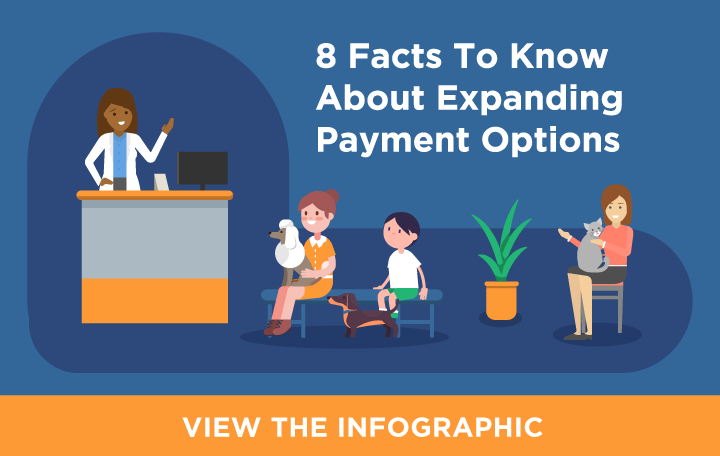My husband was in sales for 50 years so I was fortunate that his training and attitude towards “asking for business” rubbed off on me. He laughingly said, “it is easier to ask for it than work for it.” meaning that you are going to have to work much harder if you don’t learn to ask your worth and value yourself.
The money discussion applies in more than a few places in veterinary medicine. The first and most obvious is when we share estimates with clients. Over my career I was the “fortunate” one who got to do this on a frequent basis. I confess it did make me nervous when I first started because I didn’t have the training to do it well. Over time I developed confidence in my technique and also increased my medical knowledge and terminology interpretation skills so I was better at describing and explaining the care in client friendly terms.

Often we enter the exam room with a printed estimate filled with veterinary medical terminology or computer codes that only we understand. The team member presents the list to the client and begins to read the content. The client on the other hand has honed in on the numbers at the bottom of the page and completely tuned out the staff member as they develop a mental stream of thought that says “oh my gosh, how can this cost this much, there is no way I am going to pay that, they are just being ridiculous, I am sure this isn’t all necessary, I don’t understand any of this, I am going to see what they can take off, there is no reason for this” . The mistake this staff member made was allowing the client to see the numbers instead of listening to the ‘Why” behind the cost.
My technique was to carry in the estimate and a blank sheet of paper. I would cover the estimate with the blank sheet and use it as a guide to move line by line down the estimate. For each item I would explain what it was in layman’s terms and why the doctors wanted to perform the service. I learned over the years to try to relate it to something a human would have had performed on themselves or to tell a story of other patients who had successfully recovered because of this service. I also paid attention to client body language and tailored my communication to their personality style. Clients are perfectly capable of reading the words on the estimate but it is our job to translate them in a way that is clear, shows value and is compelling to the pet owner.
It is also important, after we have convinced the pet owner that our plan is valuable and worth buying that we have put systems in place to enable them to pay. A recent survey from #VitusVet shows that 36% of clients have declined care due to cost concerns, 49% would visit the vet more if payment options were available and 22% have declined service due to price. I learned many, many years ago that sharing payment options with clients was important to acceptance of care. In fact, I made sure that the stickers for my credit card providers, Amex, Discover, Mastercard and Visa, were at the handle that opened the door to the practice. Later we added CareCredit to the mix. Today veterinarians have multiple options to offer clients and I believe we should have them ALL. It has amazed me over the years how many hospitals do not accept American Express just because the processing rate is a little higher than other cards. Data shows that Amex customers are typically high spenders…why would I ever discourage them? If I were managing a practice today I would have all the major cards, CareCredit, ScratchPay, VetBilling and VitusPay…because each one reaches a different audience. It costs little more in overhead and labor to perform “one more service” for a pet. In fact, that extra service is almost all profit. So allowing a client to use a payment tool to spread the cost over time in order for them to say “yes” to care is extremely valuable. Data shows that when offered payment options invoice totals increase 71% of the time due to add-on services and products.

As younger generations of pet owners move into our exam rooms with their pets, we should pay attention to how they budget their lives. Having observed how their parents were affected by the 2008 recession this group is debt averse and often burdened with student loans. They are comfortable with subscription pay for almost everything they do. In the Vitus Vet survey 87% of people 22-44 years old have a strong interest in buy now pay later options.
Having spent 3 days at the virtual AVMA Veterinary Economic Summit I can say that the data supports the divide and conquer approach vs. the traditional metric of Average Client Transaction as a measurement of practice success. VetSuccess pulled information from more than 3000 practices and the information shows that more INCOME is driven by more frequent transactions rather than less transactions with larger ACT. From personal experience I can say our practice learned that by splitting visits into twice a year we were able to increase compliance on care and increase gross revenue and profit to the hospital. Our patients received excellent preventive care, our clients left feeling our costs were not that high and our team was happy because clients said yes to care.
The second “money talk” is about pay. Again, I know I was fortunate in my choice of spouse because he always saw my worth and pushed me to ‘ask for the money’. In so many instances I have seen veterinary team members complain about their pay but when pressed they have never taken the step to ask for more. As the hospital administrator of my practices I had complete autonomy when it came to salary for my staff as long as I stayed in budget. I gave yearly cost of living raises but I also gave merit raises to those on my team who took on extra tasks or gave extra effort in their daily work. Coming to me with the need for a raise because your rent increased was not going to motivate me to up your pay. Coming to me with a new skill or marketing idea or system improvement absolutely would. In fact, completing in house education modules would bump your pay. I wanted to work surrounded by smart, motivated, engaged people.
You also have to be willing to leave.
I read once that if you were not willing to move you had a JOB not a CAREER. Sometimes it is not possible to move very far but you can always move to a better practice that will pay your worth. At this point in time, licensed techs and experienced veterinary assistants and of course veterinarians are in the driver’s seat. Every practice I speak with needs more hands. Data from the AVMA Economic Summit reveals 5 openings for every available veterinarian. The data for technicians is equally shocking. Explore your options!
My advice to all practice owners and managers is to choose to give your clients financial options that suit their needs and to treat your team well so you keep them. Both clients and staff have other options and we want both of them to stay.
If you need help sorting out your payment options or staff development contact me at www.dboone2managevets.com
 by a veterinarian
by a veterinarian


